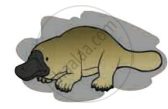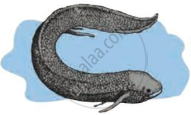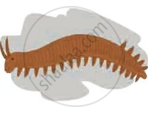Advertisements
Advertisements
प्रश्न
What do you mean by vestigial structures? Name four vestigial organs found in man.
उत्तर
1. Ill developed structures or structures which are of no use are sometimes found in both plants and animals. They are referred to as vestigial organs. The same organ may be functional in one organism but vestigial in another.
2. Vermiform appendix of man is one such organ. The reason could be that human ancestors were eating uncooked food with considerable amount of cellulose in it. The normal function of caecum and appendix
in mammals is the digestion of cellulose.
3. Man shows a number of other vestigial organs. About 100 have been named. A few examples are ear muscles, wisdom teeth, plica semilunaris (representing nictitating membrane of the eye), coccyx (reduced tail) etc.
4. In plants, the scale like leaves on the Indian pipe, a plant which has lost its chlorophyll and became saprophytic in nature, is vestigial.
5. There are certain flowers in which stamens do not bear anthers.
APPEARS IN
संबंधित प्रश्न
What are vestigial organs?
If you are asked to select a group of two vegetables, out of the following, having homologous structures which one would you select?
(a) Carrot and radish
(b) Potato and sweet potato
(c) Potato and tomato
(d) Lady finger and potato
How analogy and homology considered as an evidence in support of evolution ?
Four students P, Q, R and S differently reported the following set of organs to be analogous :
P. Forelimb of a frog and forelimb of a lizard
Q. Forelimb of a bird and forelimb of a human
R. Wings of a parrot and wings of a butterfly
S. Wings of a bird and wings of a bat
The two students who have reported correctly are :
(A) P and Q
(B) Q and R
(C) R and S
(D) P and S
Explain the terms analogous and homologous organs with examples.
Give the importance of fossil in support of organic evolution
The organs which perform similar functions but have different basic structure are called :
(a) asymmetric organs
(b) analogous organs
(c) homologous organs
(d) homophonic organs
The presence of which of the following types of organs in two animals indicates that they are not derived from a common ancestor?
(a) homologous organs
(b) excretory organs
(c) analogous organs
(d) reproductive organs
The organs P and Q of two animals have different structures but similar functions. On the other hand, the two organs R and S of two other animals have the same basic structure but different functions.
(a) What are the organs like P and Q known as?
(b) Name the organs like P and Q. Also name the animals which have such organs.
(c) What are the organs like R and S called?
(d) Name the organs like R and S. Also name the animals which have such organs.
What do we call the degenerated or partially developed useless organs in living organisms? Enlist such organs in human body? How the same organs are useful in other animals?
Read the following statement and justify same in your own words with the help of suitable example.
There is evidences of fatal science among chordates.
Write short notes based upon the information known to you.
Embryology
Write the names of those animals in whom the human body organs are functioning.
_______ is a connecting link between Annelida and Arthropoda.
Complete the following chart:

With the help of diagrams, describe emasculation and bagging.
Define phylogeny.
Answer the following question:
What are homologous structures? Give an example. Is it necessary that homologous structures always have a common ancestor? Justify your answer.
Very short answer question.
What are homologous organs?
Name the parts shown in the diagram.
Human jaw

Match the following.
| Column A | Column B |
| 1) Morphological evidences | a) Tail-bone or wisdom teeth |
| 2) Paleontological evidences | b) Leaf venation |
| c) Fossils |
Enlist the evidences of evolution.
Write the answers to the questions by observing the figure below.
 |
 |
 |
| (a) | (b) | (c) |
- Write the name of the animal ‘(a)’ in the figure.
- Write the name of the animal ‘(b)’ in the figure.
- Write the name of the animal ‘(c)’ in the figure.
- Which evolutionary evidence is illustrated by this figure?
- Write the definition of that evidence for evolution.
A human hand, a front leg of a cat, a front flipper of a whale and a bat’s wing look dissimilar and adapted for different functions. What is the name given to these organs?
Select the correct statement.
Cucurbits do not develop thick and woody stem as they are:
The presence of gill slits, in the embryos of all vertebrates, supports the theory of ______.
Flippers of Penguins and Dolphins are examples of:
What were the characteristics of life forms that had been fossilised?
Explain divergent evolution in detail. What is the driving force behind it?
As shown in figure below some organisms that share a common ancestor have features that have different functions, but similar structures.

These are known as ______. Give example.
Write avian characters of Archaeopteryx.
Industrial melanism in England after 1850 is an excellent example of Natural selection. Explain how?
Write names of some vestigial organs in the human body.
